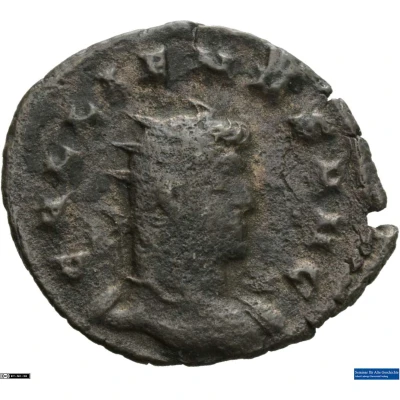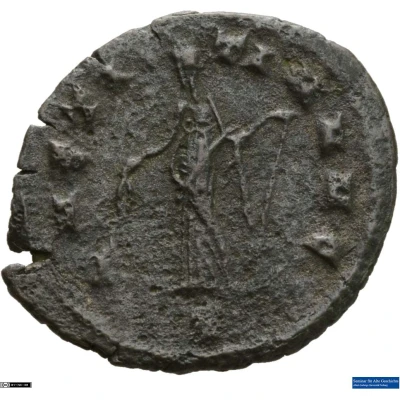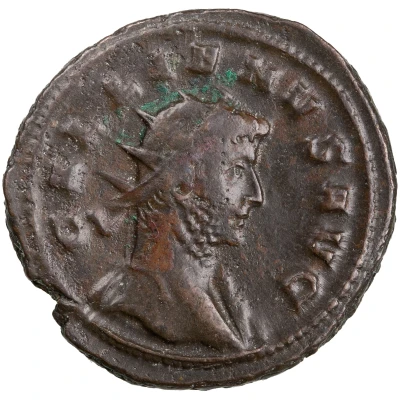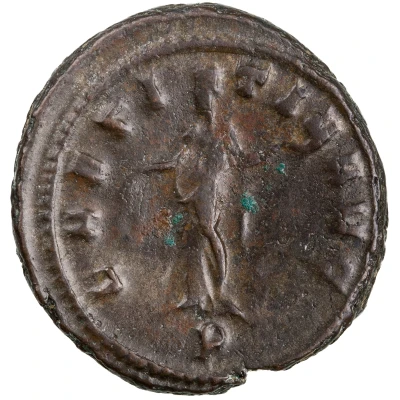


© Münzsammlung des Seminars für Alte Geschichte, Albert-Ludwigs-Universität Freiburg (CC BY-NC-SA 3.0 DE)
Antoninianus - Gallienus LAETITIA AVG; Laetitia
| Silver | 2.8 g | 19 mm |
| Issuer | Rome › Roman Empire (27 BC - 395 AD) |
|---|---|
| Emperor | Gallienus (Publius Licinius Egnatius Gallienus) (253-268) |
| Type | Standard circulation coin |
| Years | 260-268 |
| Value | Antoninianus (1) |
| Currency | Antoninianus, Reform of Caracalla (AD 215 – 301) |
| Composition | Silver |
| Weight | 2.8 g |
| Diameter | 19 mm |
| Shape | Round (irregular) |
| Technique | Hammered |
| Demonetized | Yes |
| Updated | 2024-10-05 |
| Numista | N#289142 |
|---|---|
| Rarity index | 100% |
Reverse
Laetitia, draped, standing left, holding wreath in right hand and anchor in left hand. Officina mark in right field.
Script: Latin
Lettering:
LAETITIA AVG
S
Translation:
Laetitia Augusti.
Joy of the emperor (Augustus).
Comment
Mass varies: 2.74–2.77 g;Diameter varies: 18–20 mm;
Example of this type:
Münzsammlung des Seminars für Alte Geschichte, Albert-Ludwigs-Universität Freiburg
Source:
Online Coins of the Roman Empire (OCRE)
Interesting fact
The Antoninianus coin , which features Gallienus and the goddess Laetitia on its obverse and reverse sides, respectively, was minted during a time of great turmoil in the Roman Empire. Specifically, it was produced during the "Crisis of the Third Century," a period of political instability, external threats, and economic disruption that lasted from 235 to 284 AD. Despite these challenges, the Roman Empire continued to produce coins like the Antoninianus, which remained an important symbol of the empire's power and influence.



